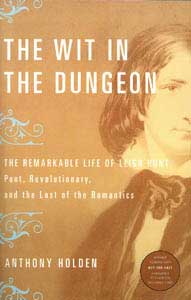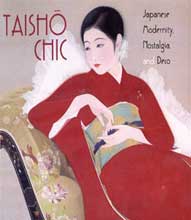home | metro silicon valley index | the arts | books | review
Book Box

The Wit in the Dungeon
English author and publisher Leigh Hunt was tirelessly prolific throughout the first half of the 19th century—if a coach rattled through the streets of London, Hunt was there to pen an essay or improvise an ode about it. Hunt is one of those literary figures whose fame faded long ago but whose memory lingers like a phantom limb because he befriended and championed writers with sturdier reputations. Everyone who knew Hunt—and that includes the likes of Romantic poets Wordsworth, Keats, Shelley and Byron and critics Charles Lamb and William Hazlitt—praised Hunt fulsomely as a boon companion, and complained quietly (or out loud, in Byron's case) about his tendency to put the bite on his pals for a pound or two now and again. Biographer Anthony Holden tracks the soaring intellectual and sinking financial careers of Hunt from his early fame as a political prisoner locked up for deprecating the morals of the Prince of Wales through his many briefly shining, quickly extinguished publications (often issued with the help of his long-suffering and much more practical brother). Holden is especially good on Hunt's difficult menage a trois with the blowhard Byron and the peacemaking Shelley. Their tragic early deaths left Hunt looking like a relic from another era by the time Charles Dickens maliciously satirized the older man in Bleak House as Harold Skimpole, a "mere child in the world" who "had no idea of money" and a freeloader "cadging money from the tale's young innocents." Hunt deserved better from the novelist whose books he had touted, and Holden's volume goes a long way toward redressing the injustice. (By Anthony Holden; Little, Brown and Company; 448 pages; $29.95 cloth)
—Michael S. Gant

Taisho Chic: Japanese Modernity, Nostalgia and Deco
With the fading of the Meiji empire and the coming of the Taisho era in the early 20th century, Japan entered a period of troubled engagement with Western ideas and capitalism that did not fade until the Depression. The push-pull relationship between East and West is explored in artists' images of young women in Taisho Chic, an amply illustrated catalog accompanying a traveling exhibit by the Honolulu Academy of Arts (now at the Berkeley Art Museum). As noted in the introduction, "Women were at the very core of the social and cultural tension in interwar Japan." New economic opportunities produced the moga, or modern girl, who worked in offices and cafes and represented the leading edge of social change (including a push for workers' rights). With their marcelled hairdos and contemporary fashions, the moga challenged centuries of tradition. The fascinating examples in the catalog show familiar woodblock and ink-on-silk techniques used to depict glamorous fashion plates at play in nightclubs or relaxing on the beach in Western-style slacks. In Tamakawa Shuho's spectacular screen painting Three Sisters, the daughters of a famous industrialist are portrayed in and about a luxury sedan of Packard vintage. Although dressed in traditional kimonos, the women look thoroughly as ease with a modern world of wealth as they stare confidently ahead, almost daring the viewer to judge them. The emphasis is on painting, but the section on "decorative arts" shows how ubiquitous the worldwide influence of streamline design and art deco was in the late '20s and early '30s. (With essays by Kendall H. Brown and Sharon A. Miniciello; Honolulu Academy of Arts; 176 pages; $29.95 paper)
—Michael S. Gant